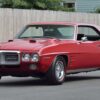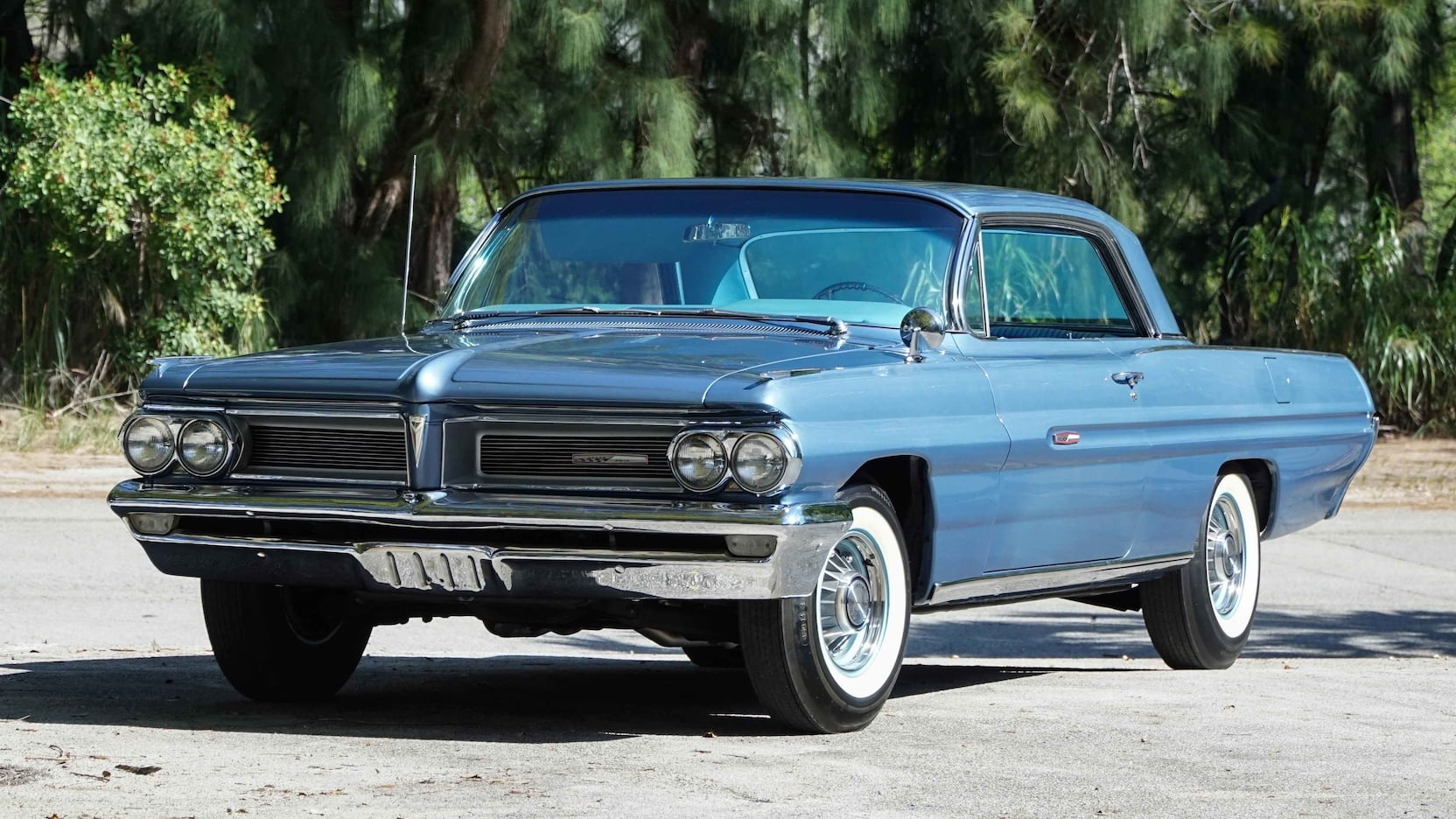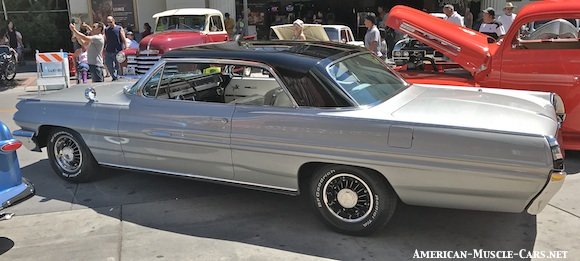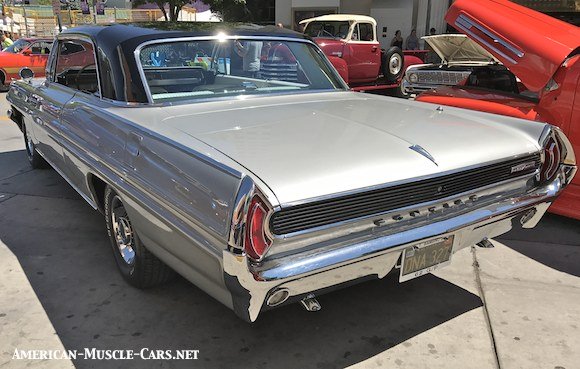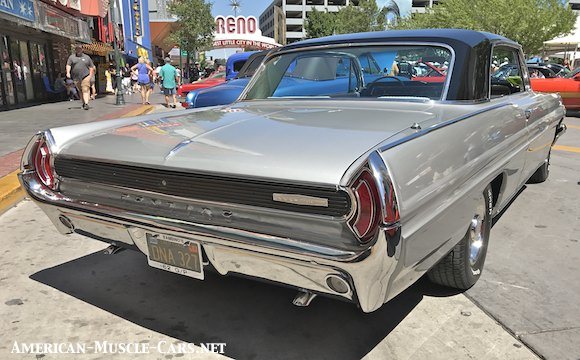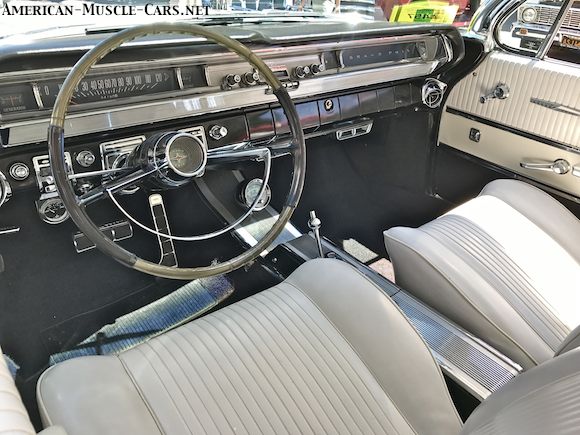1962 Pontiac Grand Prix

1962 PONTIAC GRAND PRIX BACKGROUND
During the 1950s and before, high-volume car manufacturers like Pontiac had one, maybe two basic car lines, albeit in numerous body styles and trim levels. That all changed in the 1960s. Suddenly, carmakers offered a plethora of cars from economy cars, to midsize, to full-size, and some highly-styled ‘special’ models thrown in the mix. These specials were built off of existing platforms, most often now the midsize offerings. When Pontiac decided to launch what would become one of the first ‘personal luxury cars’ for the 1962 model year, they built it on their full-size chassis, that used on the 120-inch wheelbase Catalina. Those were big cars. But the 1962 Pontiac Grand Prix carried its size beautifully thanks to its great proportions and high-style. In this case, less was more. The Grand Prix came with very little chrome trim, the absence of which made it stand out in a sea of chromed-up land yachts. The grille was recessed, taut, clean and relatively unadorned by the standards of the day. The tail lights too were interesting and unique. Overall, the car had a look, a style, a stance, and a presence that made an instant impression. Pontiac birthed the 1962 Grand Prix in direct response to the popularity of the 4-place Ford Thunderbird which is credited with creating the personal luxury sport segment, and had it all to itself from 1958 until the Pontiac Grand Prix arrived in 1962. John DeLorean helped with the styling and engineering, orienting the car more toward performance than the T-bird, but without sacrificing the luxury. Viewed in the context of generations, the 1962 Pontiac Grand Prix is a loner, sharing its shell with no other years. Starting in 1963, each new generation would last two model years (ie: 1963-64; 1965-66; 1967-68). So the ’62 in unique not just for being the first Pontiac Grand Prix, but also the only stand-alone model.
1962 PONTIAC GRAND PRIX ENGINE OPTIONS
The 1962 Grand Prix came standard with a 230-horse 389 (with 2-barrel) or a 303-horse 389 V8 (with 4-barrel and dual exhaust). All modern Pontiac V8s shared one common block architecture, in other words, there are no Pontiac small blocks and big blocks. The 389 was a very good engine, and very strong. They held together well under extreme abuse, and they got lots of it. There were some hotter engines available as options, the Tri-Power 389 (with three 3-barrels) making 318-horsepower, a Trophy 425 V8 with 348hp, and just 16 were built with the wicked 370-horse 421 Super Duty V8. The standard transmission, as always in the 1960s, was a 3-speed manual, with two 4-speeds and a 3-speed Roto Hydra-Matic (to be replaced in 1965 by the Hydra-Matic) as options. All 2-barrel engines came with automatics, while 4-barrel cars were available with either a manual or automatic transmission.
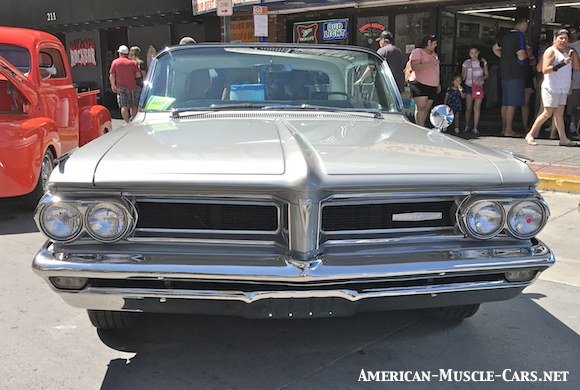
1962 Pontiac Grand Prix INTERIOR
1962 PONTIAC GRAND PRIX INTERIORS
Grand Prix’s have always been about glitzy interiors. These cars really wowed people, back in the day. And they had some stiff competition back then, from the Ford Thunderbird, and their own stablemate, the Buick Riviera. In tough company like that, the 1962 Pontiac Grand Prix faired quite well. The full-size platform yielded a very large passenger cell with a wide dash and broad floors. Pontiac did a nice job of styling such a large interior to feel intimate while still retaining its openness. Well done. The sculpted buck seats are nicely trimmed in chrome, as is the stylish center console and all the details on the dash. They succeeded in creating an elegant car that still felt sporty. They also came loaded with features that were rare in a 1962-model car, things like standard air conditioning, cruise control, power windows, a center console with floor shifter, and those cool Morrokide vinyl buckets.
1962 Pontiac Grand Prix SPECIFICATIONS
| Production figures:
’62 Grand Prix w/389 or 425 ’62 Grand Prix w/421 ’62 Grand Prix w/421SD Total all ’62 Grand Prix Platform Wheelbase Length Width Height Track, front Track, rear Curb weight Tire size Wheel size Fuel capacity ENGINE OPTIONS: 389ci V8 w/2bbl 389ci V8 w/4bbl 389ci V8 w/3 X 2bbls 389ci V8 w/4bbl H.O. 389ci V8 w/3 X 2bbls H.O. 421ci V8 w/4bbl 421ci V8 w/2 X 4bbls |
30,111
68 16 30,195 B-body, full-size 120.0″ / 3048 mm 211.6″ / 78.6″ / 54.1″ / 62.5″ / 62.5″ / 3,835 lbs / 8.00-14 14″ x 6.0″ 25 US gal / 230 hp 303 hp 318 hp 333 hp 348 hp 320 hp 405 hp |
shared w/Catalina |
A WORK IN PROGRESS
In our efforts to complete our online index, and make this the world’s greatest website about American Muscle Cars, we’re building pages as fast as we can. The first thing we add are the pictures. Then come the specs, and then the history. So, if you see a page that just has only pictures on it, please check back in a few weeks to see if we have it done. Thanks for your patience. And thanks for visiting /American-Muscle-Cars.net. Please tell your friends about us.



